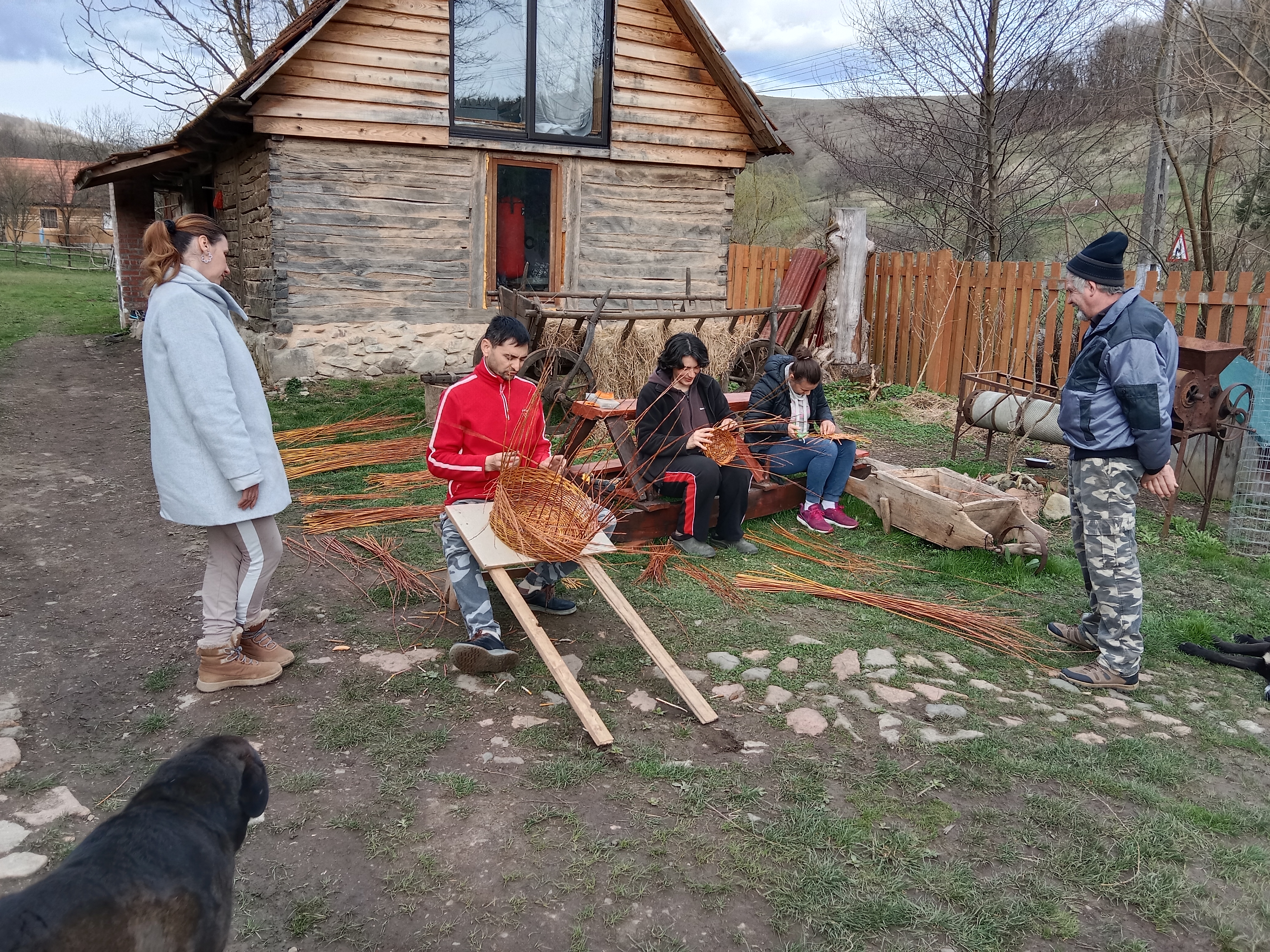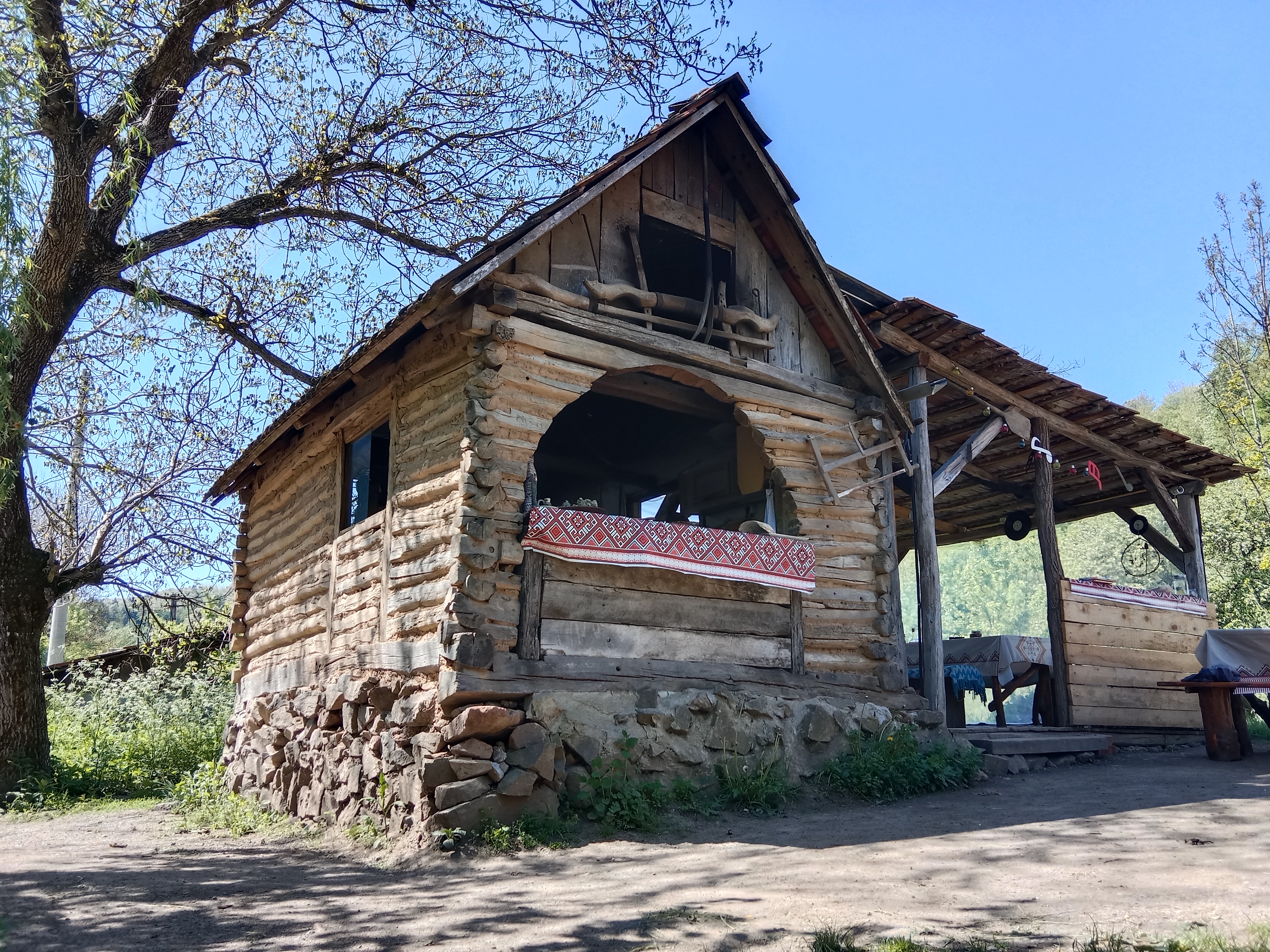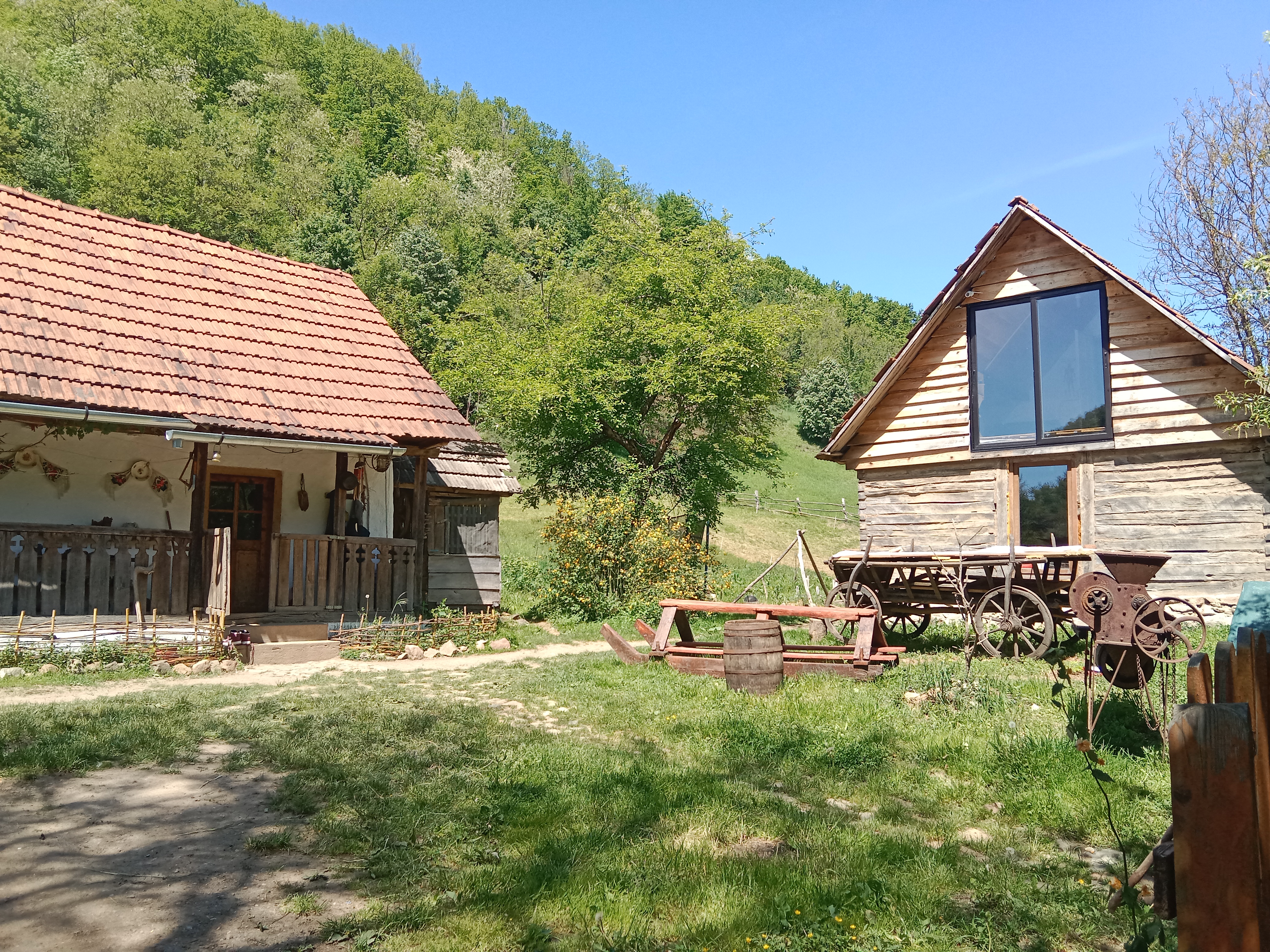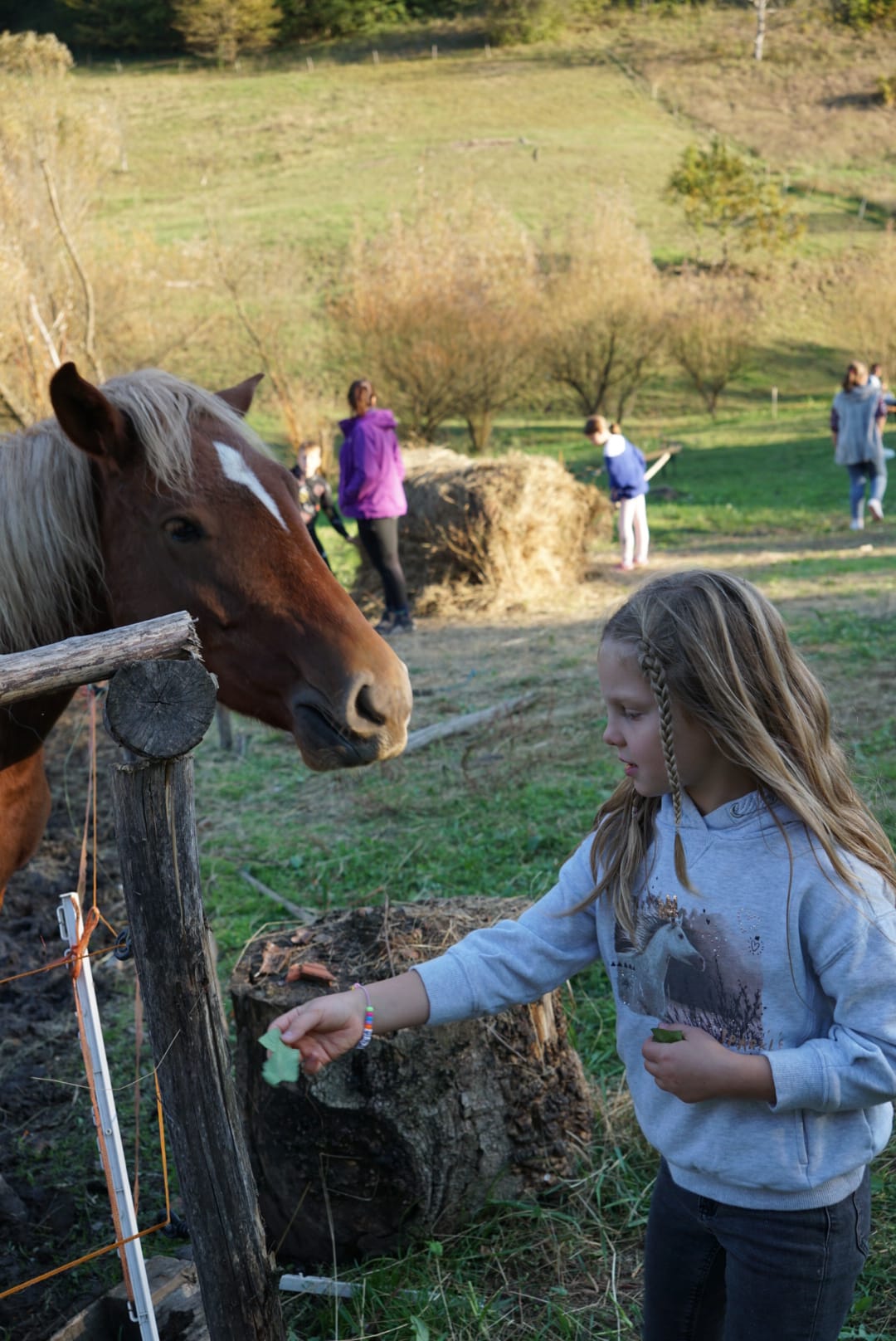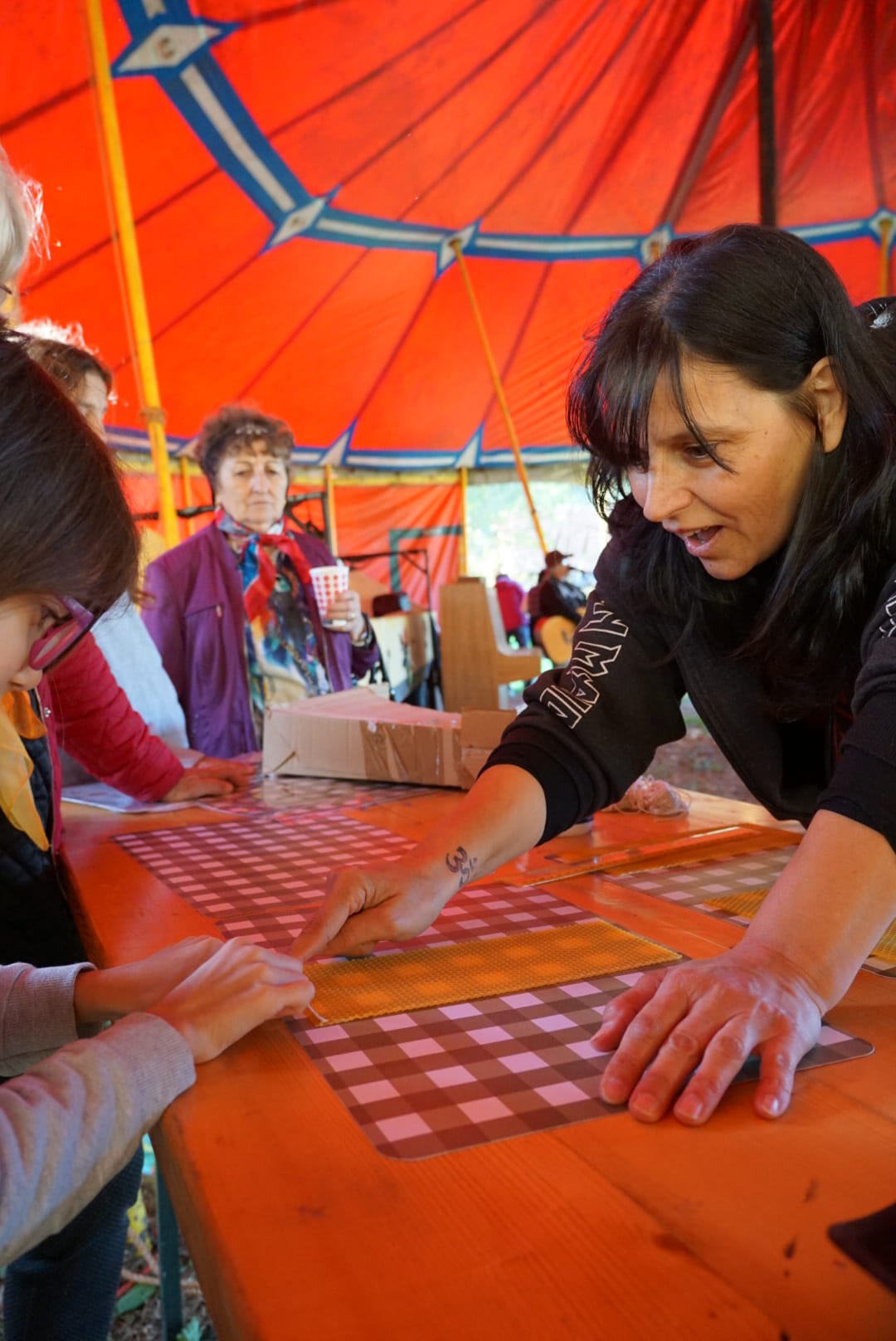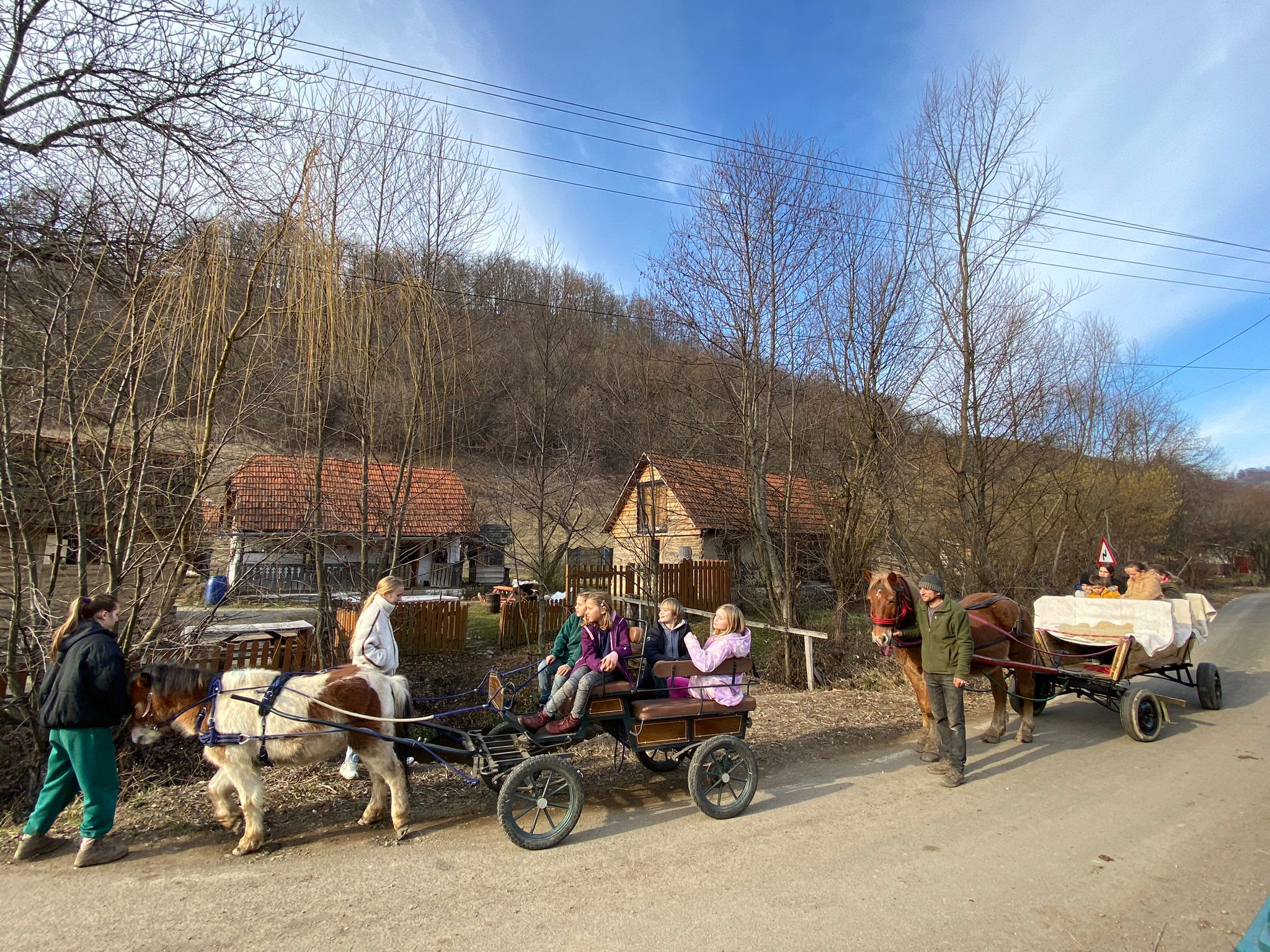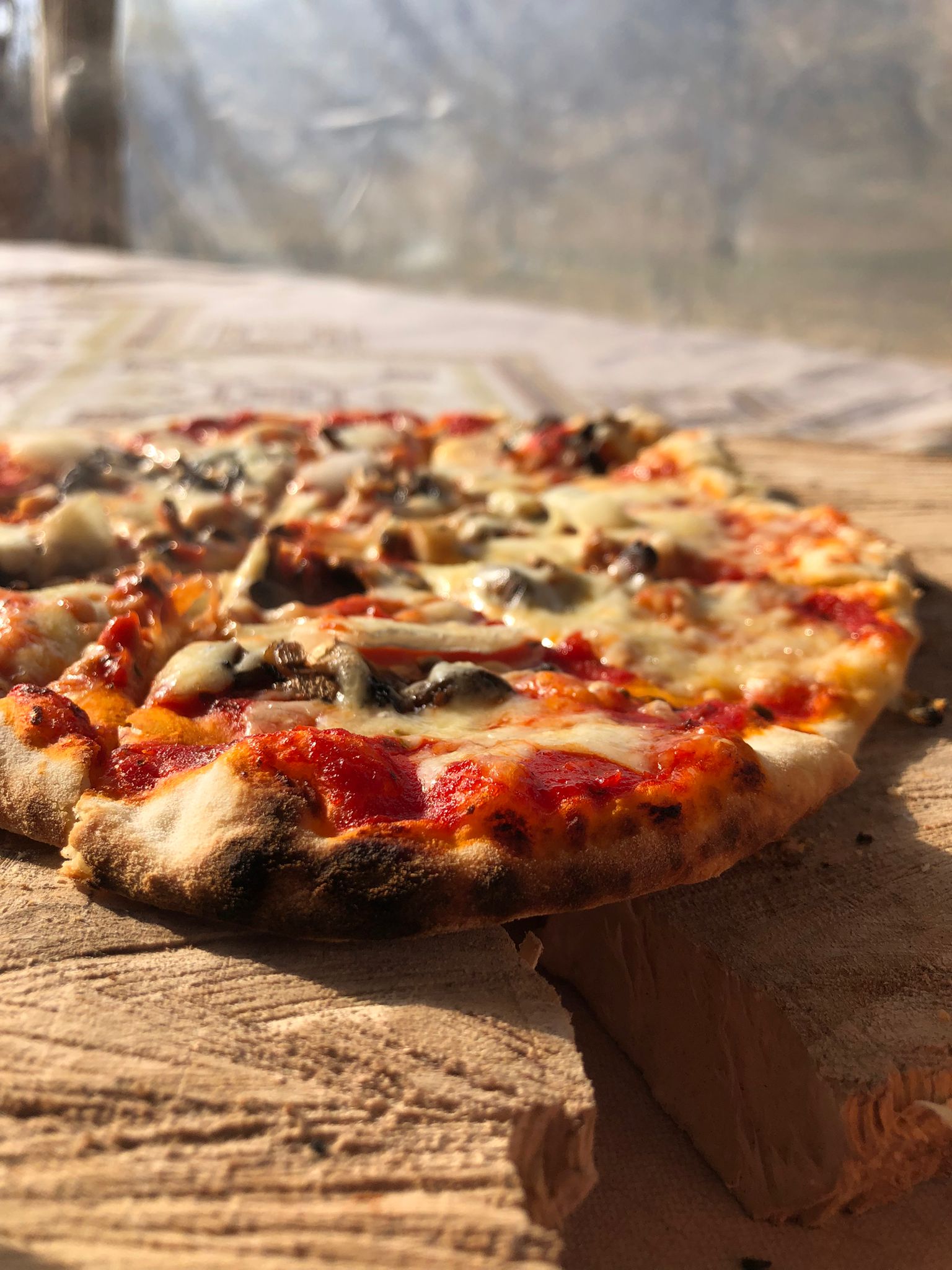Regaining a sense of belonging
Local gastronomic point ``Oaza Tolfy``
Promoting traditional products from Petris trough Local gastronomic point ``Oaza Tolfy``
Oaza Tolfy, a culinary Farm in Transilvania is a small business initiative in a rural village of Petris, Arad county in Romania. The aim of the initiative is to bring together rural architecture along with putting on emphasis on gastronomy. An old traditional farm was renovated in this endeavor by a family that felt in love with the region. The restauration was performed with eco friendly materials and the involvement of local community.
Romania
Local
Commune Petris
Mainly rural
It refers to a physical transformation of the built environment (hard investment)
Yes
2023-10-26
No
No
No
As an individual
Oaza Tolfy is a concept started by a young family in 2018 with the aim to transform an old abandoned traditional farm in a welcoming household and a meeting place for the small remote rural community of Petris. The target group of the initiative is formed of 1300 people that are located in a isolated area in the west of Romania. Initially started only as a farm but developed in a small family business by promoting local products, gastronomy and community gatherings.
For restauration were used eco friendly materials and sustainable resources, as well as local human resources in order rise awareness on local architecture and heritage.
The farm is located in an area with rich biodiversity being par of the Natura 2000 Site Zarandul de Est. Also, they own 5 horses that are grazing the rich meadows of Petris. The horses are a very good way to attract and connect locals and visitors with nature. Beside the horses, the main attraction of the settlement is the traditional oven made with mud and bricks hosted in a traditional barn.
The location has an innovative approach by introducing pizza varieties with local products and herbs such as nettles or thyme or other herbs from the rich biodiversity of the area.
One of the main outcome of the initiative are the community gatherings and events that are taking place annually such as: sezatore (traditional gatherings during winter time), mini van festival in summer, pumpkin festival i autumn, waving workshop in spring. The goal is to connect local heritage and traditions with visitors as well of creating the feeling of pride among community.
The concept restores the feeling of belonging due to the fact that it amplifies the connection with nature and local culture in an remote rural area in Romania that is facing depopulation. The initiative is very attractive among young families that are still living in the region and also for new commers.
For restauration were used eco friendly materials and sustainable resources, as well as local human resources in order rise awareness on local architecture and heritage.
The farm is located in an area with rich biodiversity being par of the Natura 2000 Site Zarandul de Est. Also, they own 5 horses that are grazing the rich meadows of Petris. The horses are a very good way to attract and connect locals and visitors with nature. Beside the horses, the main attraction of the settlement is the traditional oven made with mud and bricks hosted in a traditional barn.
The location has an innovative approach by introducing pizza varieties with local products and herbs such as nettles or thyme or other herbs from the rich biodiversity of the area.
One of the main outcome of the initiative are the community gatherings and events that are taking place annually such as: sezatore (traditional gatherings during winter time), mini van festival in summer, pumpkin festival i autumn, waving workshop in spring. The goal is to connect local heritage and traditions with visitors as well of creating the feeling of pride among community.
The concept restores the feeling of belonging due to the fact that it amplifies the connection with nature and local culture in an remote rural area in Romania that is facing depopulation. The initiative is very attractive among young families that are still living in the region and also for new commers.
Local products
Gastronomy
Nature
Sustainability
Community
The building was rebuild trough ecofriendly practices and using local knowledge and materials. The impact on environment was minimal using natural raw materials as much as possible. The barn and the oven were renovated with mud, straws and local wood.
Regarding the principle of circularity wood from other abandoned houses was reused in order to renovate this location. The initiative was set as an restauration example for the whole community.
Regarding the principle of circularity wood from other abandoned houses was reused in order to renovate this location. The initiative was set as an restauration example for the whole community.
Regarding aesthetics and quality of experience, the design aligns harmoniously with the surrounding architecture, managing to blend with the natural scenery.
A crucial aspect of the project was the involvement of local craftsmen, whose expertise played a very important role in preserving the historical elements within the building. Their contributions not only maintained the authenticity of the structure but also added unique, handcrafted details in line with region’s cultural heritage.
This approach serves as an exemplary model by demonstrating how restoration and construction can respect and enhance local traditions. By preserving traditional elements and engaging the local community in the process, the project support local cultural identity, offering a unique experience for both locals and visitors.
A crucial aspect of the project was the involvement of local craftsmen, whose expertise played a very important role in preserving the historical elements within the building. Their contributions not only maintained the authenticity of the structure but also added unique, handcrafted details in line with region’s cultural heritage.
This approach serves as an exemplary model by demonstrating how restoration and construction can respect and enhance local traditions. By preserving traditional elements and engaging the local community in the process, the project support local cultural identity, offering a unique experience for both locals and visitors.
The initiative enables the remote rural community to connect and provides a space for social interaction. Every weekend, all community members are invited to participate in local culinary events.
To support locals, various workshops are organized to help develop new skills, such as candle-making and basket weaving. These skills are highly valued, especially among unemployed individuals, as they enable them to create products that can be sold, securing extra income for their families.
Moreover, children from the local community participate in activities focused on nature and environmental awareness. These activities are also dedicated to children with special needs, both from the local community and the entire county. A favorite activity among them is horse therapy, which provides both enjoyment and therapeutic benefits
To support locals, various workshops are organized to help develop new skills, such as candle-making and basket weaving. These skills are highly valued, especially among unemployed individuals, as they enable them to create products that can be sold, securing extra income for their families.
Moreover, children from the local community participate in activities focused on nature and environmental awareness. These activities are also dedicated to children with special needs, both from the local community and the entire county. A favorite activity among them is horse therapy, which provides both enjoyment and therapeutic benefits
To reinforce the importance of environmental education, a partnership has been established with local schools to organize interactive environmental activities during summer camps and Green Week.
These activities are also dedicated to children with special needs, both from the local community and the entire county. A favorite activity among them is horse therapy, which provides both enjoyment and therapeutic benefits.
To reinforce the importance of environmental education, a partnership has been established with local schools to organize interactive environmental activities during summer camps and Green Week .Educational activities are one of the main benefit for local community targeting all children with the age between 4 -15 years old from Petris Commune, managing to rise awarness on natural and cultural heritage.
Another benefit is increasing the social interaction opportunities among local communities. In Romania there are limited social events in remote rural areas and Petris commune is not an exception. This initiative is allowing the whole community to social engage and interact, creating a strong network among locals.
These activities are also dedicated to children with special needs, both from the local community and the entire county. A favorite activity among them is horse therapy, which provides both enjoyment and therapeutic benefits.
To reinforce the importance of environmental education, a partnership has been established with local schools to organize interactive environmental activities during summer camps and Green Week .Educational activities are one of the main benefit for local community targeting all children with the age between 4 -15 years old from Petris Commune, managing to rise awarness on natural and cultural heritage.
Another benefit is increasing the social interaction opportunities among local communities. In Romania there are limited social events in remote rural areas and Petris commune is not an exception. This initiative is allowing the whole community to social engage and interact, creating a strong network among locals.
The project actively engaged stakeholders at various levels local, regional, national, and European to ensure a comprehensive and impactful implementation.
At the local level, the community played a key role in the rehabilitation, working together to restore the buildings. Local businesses were also involved by showcasing and selling their products, such as honey, syrups, jams, and soaps, which not only supported the local economy but also strengthened community identity and collaboration.
At the regional level, authorities were engaged in organizing community events. Their involvement helped create opportunities for cultural exchange and economic growth within the region.
At the European level, NGOs such as Fauna & Flora played a important role in promoting environmental awareness activities. Their support enhanced the project's visibility and impact by connecting it with broader sustainability initiatives.
The engagement of stakeholders at multiple levels added significant value to the initiative, securing resources, and ensuring long-term sustainability. The collaboration between communities, local businesses, authorities, and international organizations helped create a strong project that balances cultural, economic, and environmental goals.
At the local level, the community played a key role in the rehabilitation, working together to restore the buildings. Local businesses were also involved by showcasing and selling their products, such as honey, syrups, jams, and soaps, which not only supported the local economy but also strengthened community identity and collaboration.
At the regional level, authorities were engaged in organizing community events. Their involvement helped create opportunities for cultural exchange and economic growth within the region.
At the European level, NGOs such as Fauna & Flora played a important role in promoting environmental awareness activities. Their support enhanced the project's visibility and impact by connecting it with broader sustainability initiatives.
The engagement of stakeholders at multiple levels added significant value to the initiative, securing resources, and ensuring long-term sustainability. The collaboration between communities, local businesses, authorities, and international organizations helped create a strong project that balances cultural, economic, and environmental goals.
The design and implementation of the project integrated multiple disciplines, including heritage preservation, environmental education, and local gastronomy, to create a sustainable initiative.
Heritage Preservation: all the work from the beginning aimed to restore and maintain the authenticity of local buildings and ensuring its integration with traditional architecture. Local craftsmen were actively involved, contributing their skills to preserve and highlight local elements.
Environmental Education: The environmental activities aimed on raising awareness about nature conservation. Schools and NGOs partnered to organize interactive workshops, summer camps, and activities focused on sustainability and biodiversity.
Local Gastronomy: Chefs, food producers, and local businesses played a important role in promoting regional culinary traditions. Regular community events featured local products such as honey, syrups, and jams, giving opportunities for income to small producers while preserving traditional food culture.
The interaction between these fields was essential to the project’s success. The added value of this interdisciplinary approach was a deeply rooted, community-driven project that balanced cultural heritage, environmental sustainability, and local economic growth.
Heritage Preservation: all the work from the beginning aimed to restore and maintain the authenticity of local buildings and ensuring its integration with traditional architecture. Local craftsmen were actively involved, contributing their skills to preserve and highlight local elements.
Environmental Education: The environmental activities aimed on raising awareness about nature conservation. Schools and NGOs partnered to organize interactive workshops, summer camps, and activities focused on sustainability and biodiversity.
Local Gastronomy: Chefs, food producers, and local businesses played a important role in promoting regional culinary traditions. Regular community events featured local products such as honey, syrups, and jams, giving opportunities for income to small producers while preserving traditional food culture.
The interaction between these fields was essential to the project’s success. The added value of this interdisciplinary approach was a deeply rooted, community-driven project that balanced cultural heritage, environmental sustainability, and local economic growth.
The specific of the place is the combination between old and new, local heritage and known gastronomy. The initiative ``Oaza Tolfy`` manages to combine the two antagonistic elements in to a harmonious final product. More exactly, they combine raw local traditional products such as locally grinned flour or herbs collected from the meadows to create a final product (pizza) that is not typically associated with the area. This unique concept introduces a fresh perspective to the region, blending heritage and innovation in a way that sets it apart from mainstream initiatives.
Additionally, the project serves as an exemplary model of heritage restoration, preserving local architectural and cultural elements while integrating them into a modern and functional space. Unlike conventional projects that focus only on economic development, this initiative successfully merges tradition, creativity, and sustainability, offering a new and unique experience for both locals and visitors.
This innovative use of local resources and reinterpreting traditional elements, the project not only revitalizes the area but also provides a replicable model that could inspire similar initiatives in other regions.
Additionally, the project serves as an exemplary model of heritage restoration, preserving local architectural and cultural elements while integrating them into a modern and functional space. Unlike conventional projects that focus only on economic development, this initiative successfully merges tradition, creativity, and sustainability, offering a new and unique experience for both locals and visitors.
This innovative use of local resources and reinterpreting traditional elements, the project not only revitalizes the area but also provides a replicable model that could inspire similar initiatives in other regions.
The activity focuses on an intergraded approach with multiple principles to ensure a long-term impact.
Community involvement: Locals were actively engaged from the beginning, they participated in restoration, contributed with traditional local knowledge, and played an active role in organizing cultural activities.
Eco-friendly practices: Sustainable construction methods and environmentally responsible resource management were prioritized throughout the project. Local and natural materials were used to minimize environmental impact, and nature-based solutions were incorporated to promote biodiversity.
Inclusion: The project was designed to be accessible and benefic to all community members, including individuals from vulnerable groups and children with special needs, who were given the opportunity to participate in dedicated activities such as horse therapy and environmental education programs.
Cultural heritage promotion: Traditional craftsmanship and local architectural styles were preserved and highlighted, ensuring that the project remained deeply rooted in the area’s historical identity. Local artisans and businesses were also involved in presenting and selling their products.
Sustainability: Long-term economic and environmental sustainability was a core focus. The project created opportunities for local businesses, introduced new skills for income generation, and established educational programs to ensure continued engagement with conservation and cultural heritage.
Community involvement: Locals were actively engaged from the beginning, they participated in restoration, contributed with traditional local knowledge, and played an active role in organizing cultural activities.
Eco-friendly practices: Sustainable construction methods and environmentally responsible resource management were prioritized throughout the project. Local and natural materials were used to minimize environmental impact, and nature-based solutions were incorporated to promote biodiversity.
Inclusion: The project was designed to be accessible and benefic to all community members, including individuals from vulnerable groups and children with special needs, who were given the opportunity to participate in dedicated activities such as horse therapy and environmental education programs.
Cultural heritage promotion: Traditional craftsmanship and local architectural styles were preserved and highlighted, ensuring that the project remained deeply rooted in the area’s historical identity. Local artisans and businesses were also involved in presenting and selling their products.
Sustainability: Long-term economic and environmental sustainability was a core focus. The project created opportunities for local businesses, introduced new skills for income generation, and established educational programs to ensure continued engagement with conservation and cultural heritage.
Several elements of the project can be replicated or transferred to other locations, beneficiary groups, and contexts:
Heritage restoration model: Many similar abandoned households across Romania can be restored and revitalized using the same approach. By preserving local architecture while adapting spaces for modern use, this model demonstrates how cultural heritage can be saved and given new life.
Adapting a globally recognized product that is loved by many people: The owners incorporated their knowledge gathered in previous years in making pizza and adapted in their small locally led project, creating a distinctive identity for them. This strategy can be replicated in other rural areas by using a familiar product while incorporating local ingredients and traditions.
Local communities impact and inspiration: this activity is inspiring the entire community by demonstrating how local architecture and products can successfully revive an old farm. This approach encourages other entrepreneurs and community members to explore similar restoration and economic initiatives.
Heritage restoration model: Many similar abandoned households across Romania can be restored and revitalized using the same approach. By preserving local architecture while adapting spaces for modern use, this model demonstrates how cultural heritage can be saved and given new life.
Adapting a globally recognized product that is loved by many people: The owners incorporated their knowledge gathered in previous years in making pizza and adapted in their small locally led project, creating a distinctive identity for them. This strategy can be replicated in other rural areas by using a familiar product while incorporating local ingredients and traditions.
Local communities impact and inspiration: this activity is inspiring the entire community by demonstrating how local architecture and products can successfully revive an old farm. This approach encourages other entrepreneurs and community members to explore similar restoration and economic initiatives.
The initiative addresses several global challenges by implementing local solutions, focusing on biodiversity education, sustainable food practices, and responsible tourism.
Biodiversity education: Raising awareness about the importance of preserving biodiversity and teaching both locals and visitors about sustainable practices that protect the environment are two of the main objectives that conduct this initiative.
Slow Food Movement: By integrating local and traditional products, the activity supports the slow food movement, which promotes sustainable agriculture, local food systems, and healthier consumption habits. These practices not only involve customer education on sustainable culinary practices but also help reduce mass consumption, industrialized food production, and waste.
Sustainable development and slow tourism: The initiative encourages slow tourism, an alternative to mass tourism that respects local culture, heritage, and the environment. By restoring abandoned farms and revitalizing rural areas, the project creates sustainable economic opportunities, helping to prevent rural depopulation while promoting eco-friendly tourism models.
Through these local actions, the project contributes to global sustainability goals, demonstrating how small-scale, community-driven initiatives can address pressing environmental, economic, and cultural challenges.
Biodiversity education: Raising awareness about the importance of preserving biodiversity and teaching both locals and visitors about sustainable practices that protect the environment are two of the main objectives that conduct this initiative.
Slow Food Movement: By integrating local and traditional products, the activity supports the slow food movement, which promotes sustainable agriculture, local food systems, and healthier consumption habits. These practices not only involve customer education on sustainable culinary practices but also help reduce mass consumption, industrialized food production, and waste.
Sustainable development and slow tourism: The initiative encourages slow tourism, an alternative to mass tourism that respects local culture, heritage, and the environment. By restoring abandoned farms and revitalizing rural areas, the project creates sustainable economic opportunities, helping to prevent rural depopulation while promoting eco-friendly tourism models.
Through these local actions, the project contributes to global sustainability goals, demonstrating how small-scale, community-driven initiatives can address pressing environmental, economic, and cultural challenges.
The project has achieved significant results, outcomes, and impacts, benefiting both direct and indirect stakeholders across various categories:
Annual events: 6 annual events, including a circus school, minivan festival, pumpkin festival all having the aim to promote small local business and traditional activities.
Tourist engagement: yearly are ghadering 850 tourists through organized tours, promoting the region’s heritage and local products.
Educational impact: A total of 120 children from the local community and 400 children from other areas participated in educational and environmental activities, raising awareness about sustainability and nature conservation.
Community support: 30 community members directly supported the development of the initiative trough building expertise and different crafting knowledge.
Social engagement: Approximately 100 locals attended social activities, strengthening community ties and creating opportunities for cultural exchange.
Institutional involvement: The project engaged 2 local councils, 3 NGOs, and 1 county council, creating a network of support that ensured long-term sustainability.
Annual events: 6 annual events, including a circus school, minivan festival, pumpkin festival all having the aim to promote small local business and traditional activities.
Tourist engagement: yearly are ghadering 850 tourists through organized tours, promoting the region’s heritage and local products.
Educational impact: A total of 120 children from the local community and 400 children from other areas participated in educational and environmental activities, raising awareness about sustainability and nature conservation.
Community support: 30 community members directly supported the development of the initiative trough building expertise and different crafting knowledge.
Social engagement: Approximately 100 locals attended social activities, strengthening community ties and creating opportunities for cultural exchange.
Institutional involvement: The project engaged 2 local councils, 3 NGOs, and 1 county council, creating a network of support that ensured long-term sustainability.

